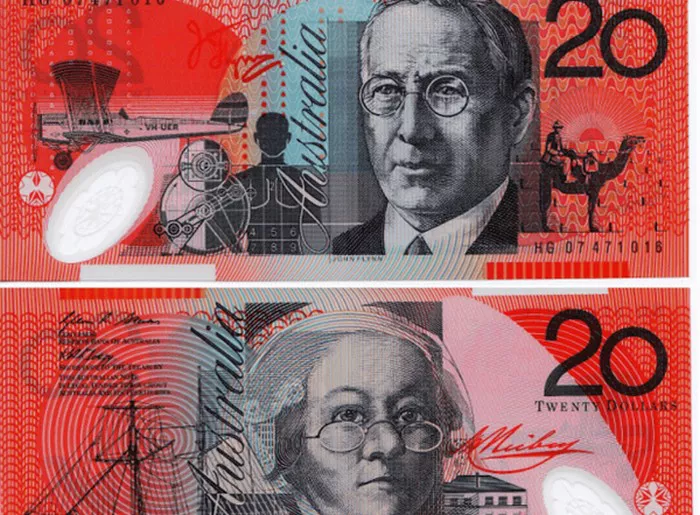The strength of a currency plays a significant role in the economy of a country, affecting international trade and investment. The US dollar (USD) and the Australian dollar (AUD) are two of the most traded currencies globally, but which of these two is stronger? In this article, we’ll explore the factors that affect currency strength and compare the USD and AUD to determine which one is currently stronger.
Understanding Currency Strength
Currency strength refers to the value of a currency relative to other currencies in the foreign exchange market. A strong currency has a higher value than weaker currencies. Several factors can influence the strength of a currency, including:
1. Economic fundamentals: The economic performance of a country affects the strength of its currency. A healthy economy with low inflation, high employment rates, and stable interest rates often leads to a strong currency.
2. Political stability: Political instability and uncertainty can weaken a currency.
3. Monetary policy: The decisions made by central banks regarding interest rates and money supply can affect currency strength.
4. Trade and investment flows: The demand for a currency is affected by the volume and direction of trade and investment flows.
Now that we understand the factors that influence currency strength let’s take a closer look at the USD and AUD.
US Dollar (USD)
The US dollar is widely regarded as the world’s reserve currency, meaning it is used for international transactions and held as a reserve by many central banks. The US economy is one of the largest in the world, and the US dollar’s strength is influenced by various factors, including:
Economic Fundamentals
The US economy has been growing steadily over the past few years, with unemployment rates falling and inflation remaining relatively low. The recent COVID-19 pandemic initially had a negative impact on the US economy, but government intervention through stimulus packages and monetary policy measures helped to soften the blow. These measures have supported consumer spending and business investment, which have helped to maintain the strength of the US dollar.
Monetary Policy
The Federal Reserve (Fed) is responsible for setting monetary policy in the US, including interest rates. In March 2020, the Fed cut interest rates to near zero in response to the COVID-19 pandemic. The move was intended to support the economy by making borrowing cheaper, but it also had the unintended consequence of weakening the US dollar. However, as the economy has improved, the Fed has begun to signal that it may start to raise interest rates again. This is likely to strengthen the US dollar further.
Trade and Investment Flows
The US is one of the world’s largest trading nations, with significant trade relationships with countries such as China, Canada, and Mexico. The US dollar is widely used in global trade, and this demand for dollars helps to support its strength. The US is also a significant destination for foreign investment, with many investors holding US assets such as stocks and bonds. This inflow of foreign capital creates demand for US dollars, further supporting its strength.
Australian Dollar (AUD)
The Australian dollar is the official currency of Australia and is also commonly used in neighboring Pacific Island countries such as Fiji and Papua New Guinea. The currency is influenced by several factors, including:
Economic Fundamentals
The Australian economy is highly dependent on commodity exports, particularly minerals such as iron ore and coal. As a result, the value of the Australian dollar is closely tied to commodity prices. When commodity prices are high, the Australian dollar tends to be strong, and when they are low, the currency tends to weaken. Additionally, Australia has experienced a period of economic growth over recent years, although the COVID-19 pandemic has caused some disruptions.
Monetary Policy
The Reserve Bank of Australia (RBA) sets monetary policy in Australia, including interest rates. The RBA has kept interest rates low in recent years to support the economy, although it has indicated that it may start to raise rates soon. Higher interest rates are likely to strengthen the Australian dollar.
Trade and Investment Flows
The Australian economy is heavily dependent on international trade, with China being its largest trading partner. As a result, the value of the Australian dollar is influenced by trade flows. Additionally, Australia is an attractive destination for foreign investment, particularly in the property sector. Foreign investors need to purchase Australian dollars to invest in these assets, supporting the strength of the currency.
So, Is USD Stronger Than AUD?
Based on the factors discussed above, it is difficult to determine which currency is currently stronger. Both currencies have their strengths and weaknesses, and their values are influenced by different factors. At the time of writing this article, the exchange rate was approximately 0.75 AUD to 1 USD. However, this value can fluctuate rapidly depending on economic and political events.
Conclusion
Currency strength is an essential aspect of the global economy, and understanding the factors that influence it can help investors make informed decisions. The US dollar and Australian dollar are both significant currencies.


